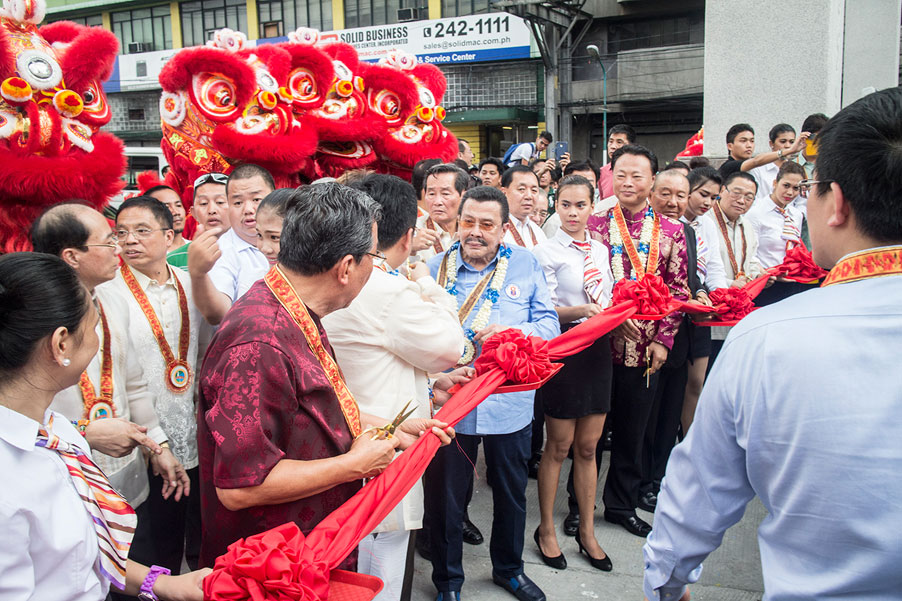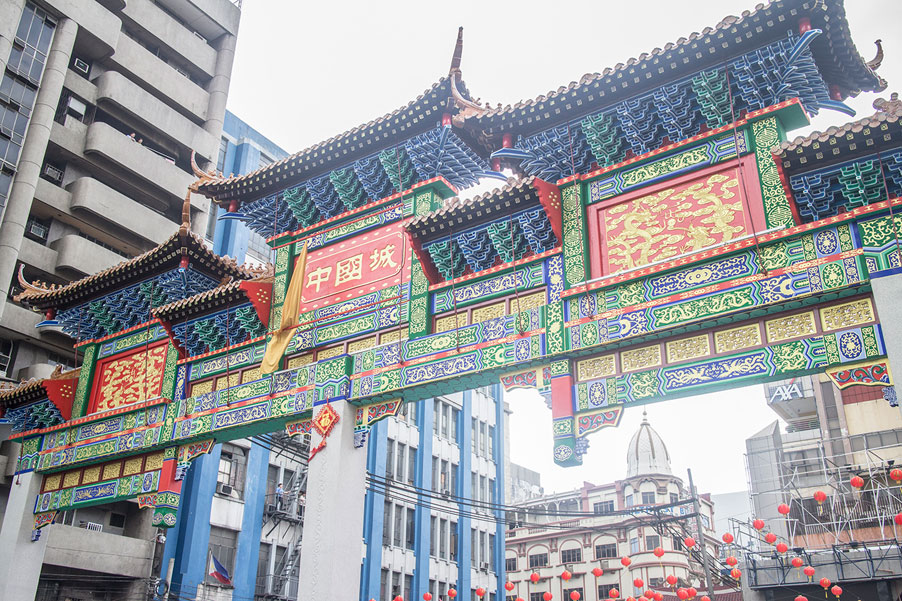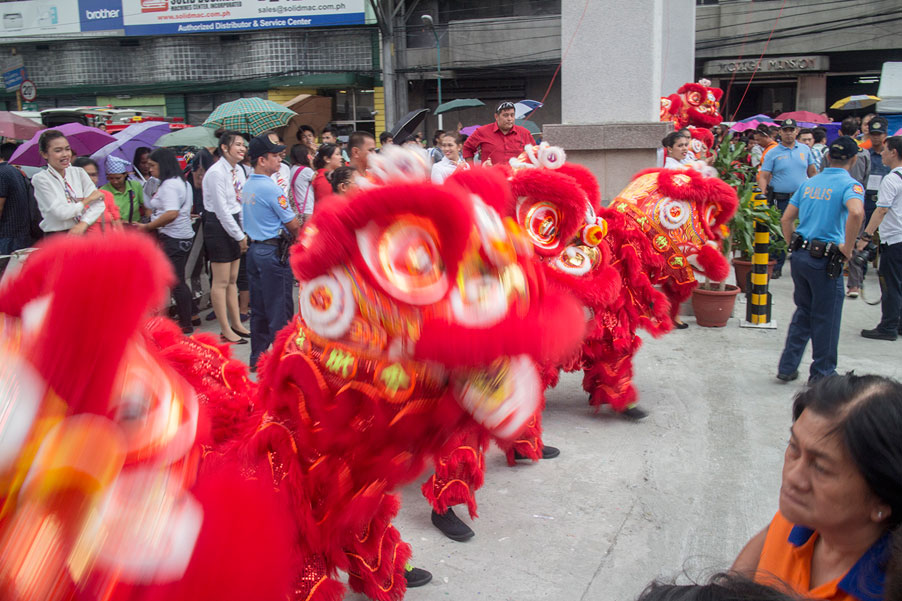Got a tip? Send it to us at manila@coconuts.co.
So yesterday, June 23, the brandspanking new Chinatown arch in Binondo was inaugurated at Plaza Moraga near the foot of Jones Bridge. The event was to celebrate both the 444th founding of the city of Manila and the 40th year of diplomatic ties between Philippines and China.
It has also been dubbed as THE LARGEST CHINATOWN ARCH IN THE WORLD.
Manila City Mayor Joseph Estrada was there, along with Chinese Ambassador Zhao Jianhua, president of Philippine Chinese Charitable Association James Dy, and deputy director general of the city of Guangzhou Foreign Affairs Office representative Zeng Quingchun.

There’s much to be happy about the new arch: As we mentioned, it’s now the largest in the world at 3.8-feet taller than the one found in Washington, DC. The foundations of the arch are 30 meters deep to prevent collapse in case of earthquakes.
But more than anything, it much be celebrated because it’s a testament to our friendship with China — or at least with the City of Guangzhou. The new Chinatown arch, built for PHP22,500,000 (USD500,000) was funded by the City of Guangzhou. As in, not a single centavo came from the City of Manila.
(How it could cost that much another story.)
But not all local Chinese Filipinos are happy. Tessy Ang-See, founder of Tsinoy civic org Kaisa Foundation, claims that what is written on the arch, chong guo zheng, is not entirely representative of the local Chinese community.
Literally, it means ‘China Town’. It implies that Binondo is a town or outpost of China.

“Overseas Chinese communities would’ve preferred the term hua ren qu or ‘Chinese people district’ to describe themselves — like Vancouver’s Chinatown. They say the experiences of each overseas Chinese community is different and unique,” says Ang-See
According to her, it’s not enough to set up a district with Chinese restaurants and shops and call it Chinatown. Besides, she reasons, Binondo is not a “China Town” but a “Tsinoy Town”.
“We have the Jollibee and Starbucks beside the Wai Ying restaurant and President Tea House. Where else can you see hopia that is ube in flavor or chiffon cakes sold side by side Chinese steam buns? Binondo is unique in its blending and that is what should be celebrated instead.”
Ivan Man Dy, of Old Manila Walks, agrees with Ang-See. He says that unless you speak Chinese, you won’t realize the subtle difference between chong guo zheng and hua ren qu.

“The first one implies that Binondo is an outpost of China, rather than an ethnic district. We want Binondo to be recognized for its ethnicity as opposed to being a mainland Chinese outpost. That is because Binondo was born out of 400 years of interaction between Chinese, Filipino, Spanish and other culture that have touch our shores in the last 400 years,” explains Man-Dy.
“It is not within our Tsinoy sensibility to build that arch because we see Binondo as a historic district, not as a mainland Chinese city, as what the arch implies. It is the nuances of the word which make a very big impact,” he adds.
Both Man Dy and Ang-See agree that the friendship arches built in the ‘70s are more representative of Binondo than the new one. Each of the arch celebrates a specific aspect of Fil-Chinese relationship which are friendship, unity and harmony.
Besides, those arches were built using funds raised from the Tsinoy community, which meant those had their approval.
Guess this means that the new one, with funds coming entirely from the City of Guanzhou, does not.
Photos: Anson Yu
Done reading? Sit back, relax and watch Coconuts TV:



